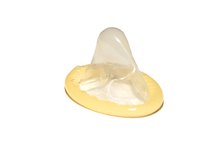The 10 Most Bizarre Allergies That People Really Suffer From
Today, allergies affect about 50 million Americans each year. Penicillin, peanuts and cats are all very common allergens. But strange substances causing allergic reactions is more of a modern phenomenon. “If you lived 120 years ago, any allergy would have been considered unusual because they were virtually unknown before the late 19th century,” says “The Allergy Solution” author Leo Galland, M.D.
If you are experiencing serious medical symptoms, seek emergency treatment immediately.
“Initially, it was just pollen or bee stings. But now it’s becoming substances that hide within other substances.” Here are 10 oddball allergies that doctors have actually treated. And you probably haven't heard of them — unless you’re one of the few people who suffer from them!
1. Guitar Strings
In “The Allergy Solution,” Dr. Leo Galland shares the story of his patient — a rock musician whose fingertips got red, scaly and flaky every time he played his guitar. He had become allergic to the nickel in his guitar strings. So he switched to an acoustic guitar with nylon strings, avoided all jewelry and anything else made with stainless steel (because that contains nickel) and went on a nickel-free diet, avoiding chocolate, oatmeal, almonds and legumes.
“It takes six months of avoidance to get nickel out of your system,” says Dr. Galland. After that, he slowly began to re-introduce nickel-containing foods into his diet. "Being exposed to something orally can desensitize you," he says. "Finally, after about nine months, he could pick up the electric guitar again.”
Read more: Seasonal Allergies Health Center
2. Sunlight
What Happens When a Carpenter Bee Stings?
Learn More
Stepping outside to get a healthy dose of vitamin D is good for you — unless you’re one of the few people who are allergic to the sun’s rays. Sandra Hong, M.D., an allergist-immunologist at Cleveland Clinic, says, “Certain wavelengths of light can cause solar urticaria, also known as sunlight-induced hives.”
If you break out in hives every time you go outdoors, what do you do besides live a vampire-like existence? “You need to cover up as best as possible: a hat, long sleeves, long pants,” Hong suggests, “and take long-acting antihistamines. Also, sunscreen that works by blocking all UVA rays — such as Vanicream — can be helpful.”
3. Mattress and Pillow Foam
What if you couldn’t get any shut-eye because you were allergic to your own comfy bed? Sad but true. Dr. Leo Galland treated a patient who was allergic to the foam in insulation and pillows, causing quite a few sleepless nights.
“Foam is made from two types of substances: isocyanate and sugar alcohol," he says. "The isocyanate is what can cause allergic reactions.” Common reactions to memory foam can include rashes, difficulty breathing or insomnia. If you’ve been noticing a reaction, Dr. Galland suggests trying a cotton or wool mattress and pillows made of Dacron or feathers — that is, if you’re not allergic to feathers, too.
Read more: 5 Tips to Stay Allergy-Free This Spring
4. Semen
What Are Allergy Symptoms From Nutmeg?
Learn More
Imagine you finally found “the one” — funny, smart, attractive, good chemistry, common interests. But then you get intimate and hit a speed bump in the bedroom that makes sex unbearable: You're allergic to his semen. Women really can be allergic to their partner’s semen, according to allergist Robert Holzhauer, M.D., from the Allergy Partners of the California Central Coast.
The International Society for Sexual Medicine explains that it’s a rare allergic reaction to the proteins found in a man’s semen that causes redness, swelling, pain, itching and a burning sensation in the vaginal area. So what can you do? “Use a condom to create a barrier,” Dr. Holzhauer says. “But just make sure you’re not allergic to latex.”
5. Furniture
How is is even possible to be allergic to your furniture? If it contains formaldehyde. “If you’re allergic to it, handling something made out of it or breathing it in can cause a rash or asthma,” Dr. Leo Galland says. Formaldehyde can be found in the glue in everything from plywood, particleboard and, yes, furniture, carpet and laminated flooring. The chemical is also used in beauty and cleaning products.
Even those who don’t suffer from allergies can avoid this potential carcinogen by buying furniture made from real wood, not glued wood, plastic and/or metal. The Environmental Working Group advises looking out for these ingredients: DMDM hydantoin, imidazolidinyl urea, diazolidinyl urea, quaternium-15, bronopol (2-bromo-2-nitropropane-1,3-diol), 5-Bromo-5-nitro-1,3-dioxane and hydroxymethylglycinate.
Read more: 10 Facts You Need to Know About Food Allergies
6. Air-Conditioning
On a sweltering day, nothing feels better than the cool blast of air-conditioning — unless you’re allergic to it. Then it means a whole host of health problems, including cold urticaria (large red welts caused from the cold) and difficulty breathing.
But a more common allergy culprit is actually the mold growing in your air-conditioning system. Turning on your AC (particularly the first time of the season) can stir the spores up. And it’s not just at home. Dr. Leo Galland says, “Mold can also grow on your air-conditioning in your car and cause asthma, a skin rash, cognitive problems and excessive sleepiness.” Luckily, there are products designed to kill the mold spores in your AC vents.
7. Jalapeños and Other Hot Peppers
For some people, jalapeños are a must-have on everything from salsas and jams to pizza, sushi rolls and margaritas. But if you’re allergic to them, they can be downright dangerous. Dr. Robert Holzhauer treated a patient who suffered from anaphylaxis anytime she ate anything cooked with jalapeño peppers.
So what is it about these fiery peppers that causes an allergic reaction? The capsaicin, which gives peppers their spiciness. If you’re allergic to capsaicin, you should avoid all chili peppers, including the most common ones — green chilies, habaneros, hatch chilies, Scotch bonnets and Serrano peppers.
Read more: 8 Risks That Seem Scary But Are Totally Worth It
8. Vibrations
Roller coasters. Any 4-D movie theaters with motion seats. Your favorite battery-operated “boyfriend.” Your smartphone. You could be allergic to all of these things if you have vibratory urticaria — an allergy to vibrations. “Vibrations can actually cause hives,” Dr. Sandra Hong says. “Nearby construction, the sound of a jackhammer, using household products like a blender or even vacuuming can make them appear.”
According to a 2016 study led by researchers at the National Institute of Allergy and Infectious Diseases (NIAID) and the National Human Genome Research Institute (NHGRI), people who are allergic to vibrations experience an exaggerated version of a normal cellular response to vibration. If you suffer from this rare disorder, Dr. Hong advises, “avoidance and long-lasting antihistamines.”
9. Exercise
It sounds like a genius excuse, but according to allergist-immunologist Dr. Sandra Hong, being allergic to exercise is an actual problem. People can develop exercise-induced anaphylaxis, a rapidly progressing allergic reaction that affects the entire body. “It can cause airway constriction, skin and intestinal irritation and irregular heart patterns,” she says.
It gets even more interesting: Apparently, the exercise allergy can by triggered by certain foods. If this proves true for a patient, he or she should exercise in the morning before eating, according to Runner’s World, as well as carry an EpiPen (self-injectable epinephrine), the antihistamine Benadryl and Medic Alert identification in case of emergencies.
Read more: 8 Scary Health Conditions With Zero Symptoms
10. Water
Imagine taking a refreshing sip of cool water, and then experiencing severe itching and breaking out in hives. It may sound like science fiction, but, says Dr. Sandra Hong, “aquagenic urticarial — also known as having a water allergy — is a very real thing.”
But the good news is that it’s very rare. Fewer than 100 cases have been published in medical literature, according to LiveScience.com, which also states the allergic reaction consists of lesions that only last about 30 minutes. As far as treatments, due to the rarity of the condition, information is limited about their effectiveness. However, H1-antihistamines, phototherapy, Durabolin (an anabolic steroid) and creams that create a barrier between water and skin have shown varying degrees of success.
What Do YOU Think?
What the strangest allergy you've ever heard of? Do you have an allergy and how did you find out that you had it? Tell us in the comments!









